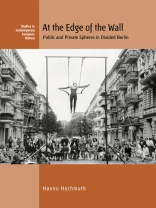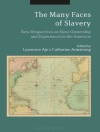Located in the geographical center of Berlin, the neighboring boroughs of Friedrichshain and Kreuzberg shared a history and identity until their fortunes diverged dramatically following the construction of the Berlin Wall, which placed them within opposing political systems. This revealing account of the two municipal districts before, during and after the Cold War takes a microhistorical approach to investigate the broader historical trajectories of East and West Berlin, with particular attention to housing, religion, and leisure. Merged in 2001, they now comprise a single neighborhood that bears the traces of these complex histories and serves as an illuminating case study of urban renewal, gentrification, and other social processes that continue to reshape Berlin.
Table des matières
List of Illustrations
Acknowledgments
List of Abbreviations
Map of Friedrichshain and Kreuzberg
Introduction
Chapter 1. Historical Foundations
Part I: Housing
Chapter 2. Housing as a Constitutive Field of the Public and Private Spheres
Chapter 3. The Long “Gestation Period” of Tenement Buildings: Sorauer Strasse
Chapter 4. The Public and Private Sphere in Urban Transformation: Strasse der Pariser Kommune
Chapter 5. Kreuzberg Counter-Public Spheres
Chapter 6. Neighborhood Appropriation in Friedrichshain
Interim Conclusion I
Part II: The Church
Chapter 7. The Church as a Constitutive Field of the Public and Private Spheres
Chapter 8. Church and the Neighborhood Public Sphere in the Kreuzberg
Chapter 9. The Church as a Surrogate Public Sphere in Friedrichshain
Interim Conclusion II
Part III: Entertainment
Chapter 10. Entertainment as a Constitutive Field of the Public and Private Spheres
Chapter 11. Neighborhood Entertainment: Fruchtstrasse Taverns
Chapter 12. The Diversification of Kreuzberg Bar Culture
Chapter 13. Festival Culture Between East and West
Interim Conclusion III
Chapter 14. Perspectives: Friedrichshain and Kreuzberg in Transformation since 1989–90
Conclusion
Bibliography
Index
A propos de l’auteur
Hanno Hochmuth is a research fellow at the Leibniz Centre for Contemporary History in Potsdam (ZZF) and teaches at the Free University of Berlin. He is editor, with Paul Nolte, of Stadtgeschichte als Zeitgeschichte: Berlin im 20. Jahrhundert (Urban History as Contemporary History: Berlin in the Twentieth Century) published in 2019 by Wallstein, and with Martin Sabrow and Tilmann Siebeneichner, of Weimars Wirkung. Das Nachleben der ersten deutschen Republik (Weimar’s Legacy. The Afterlife of the First German Republic), published in 2020 by Wallstein.












